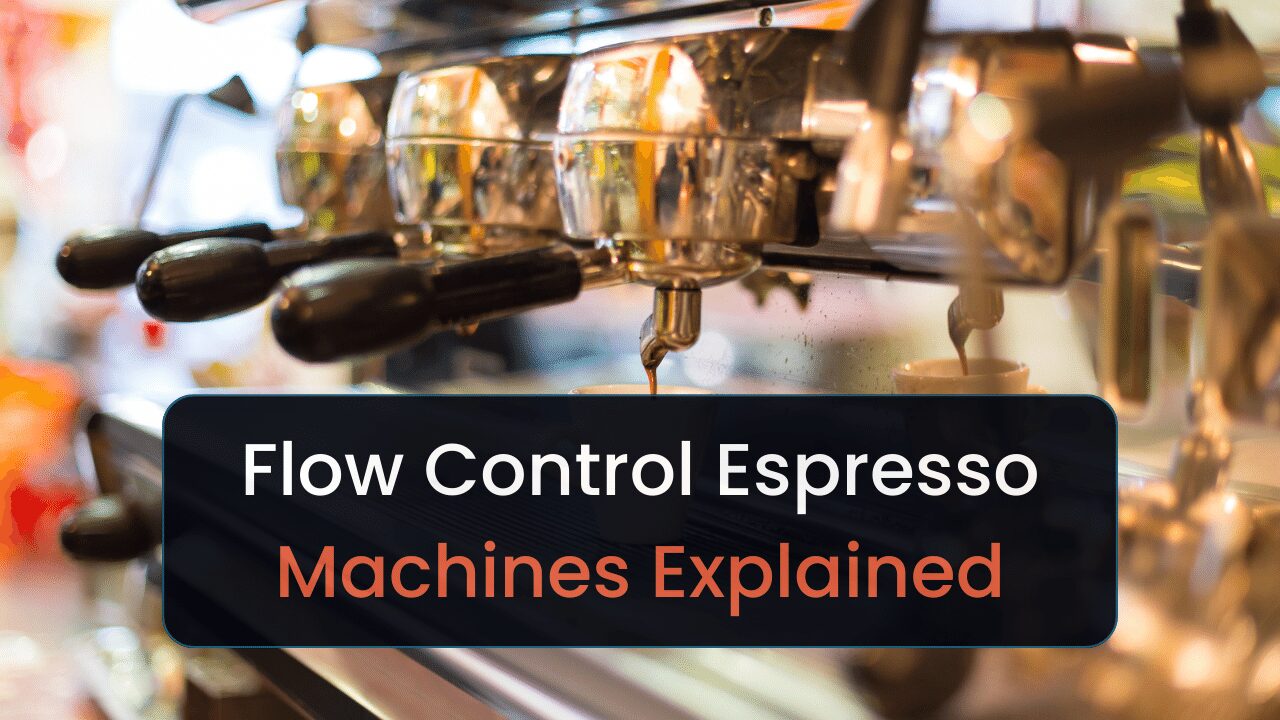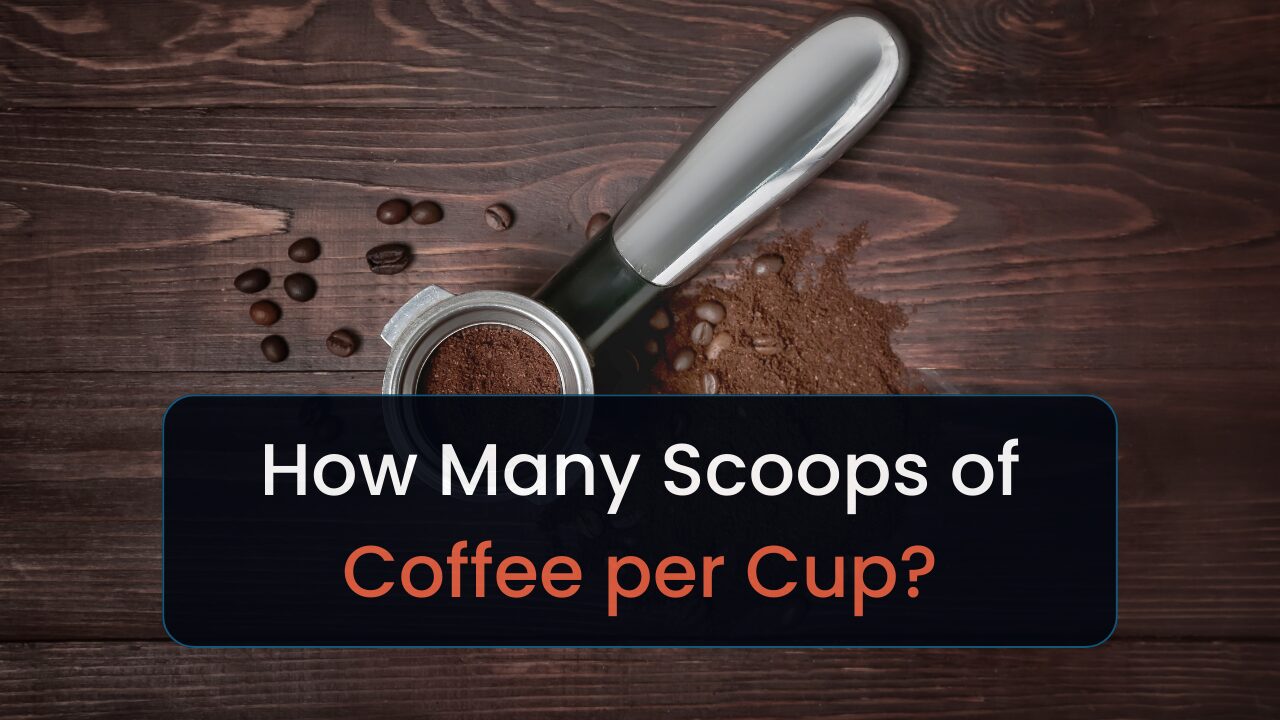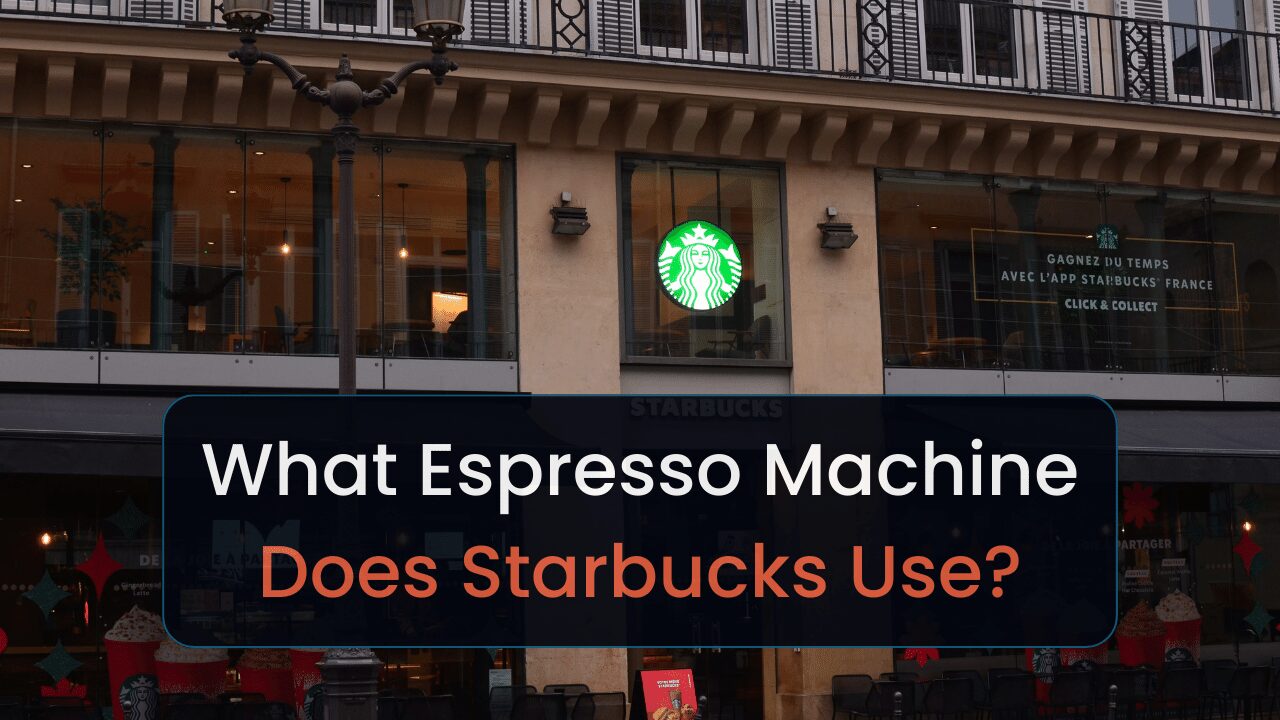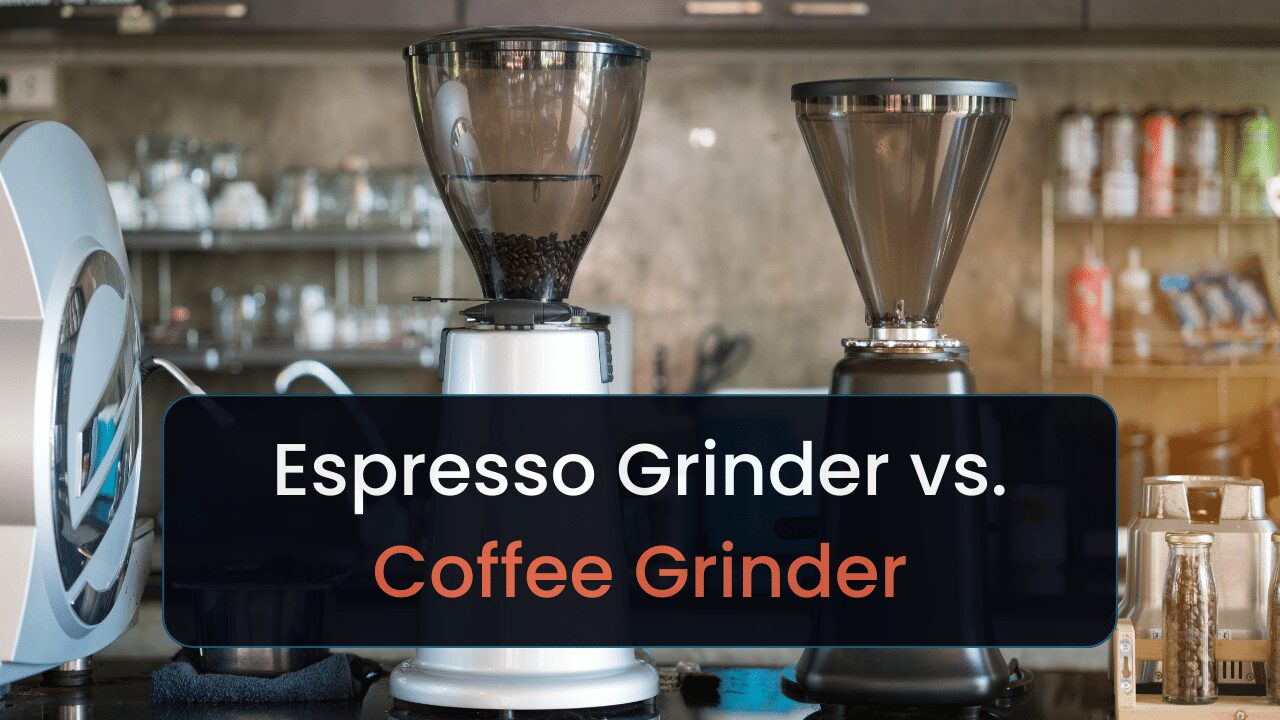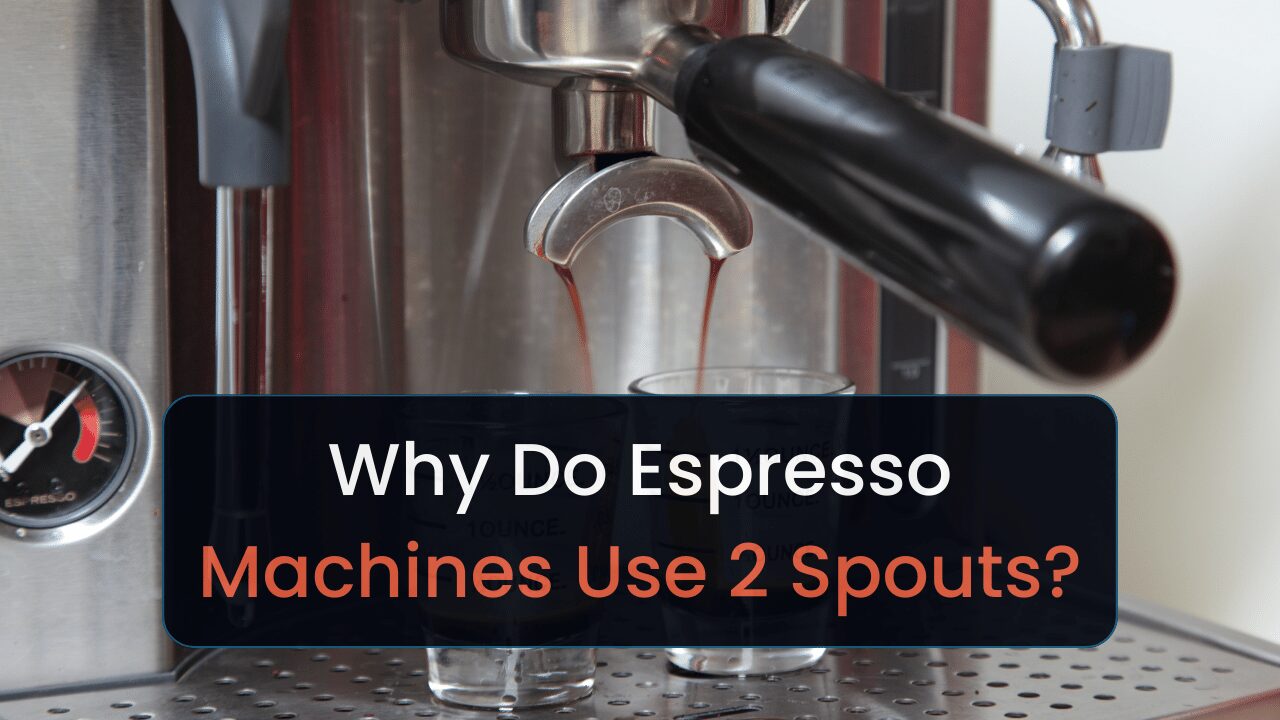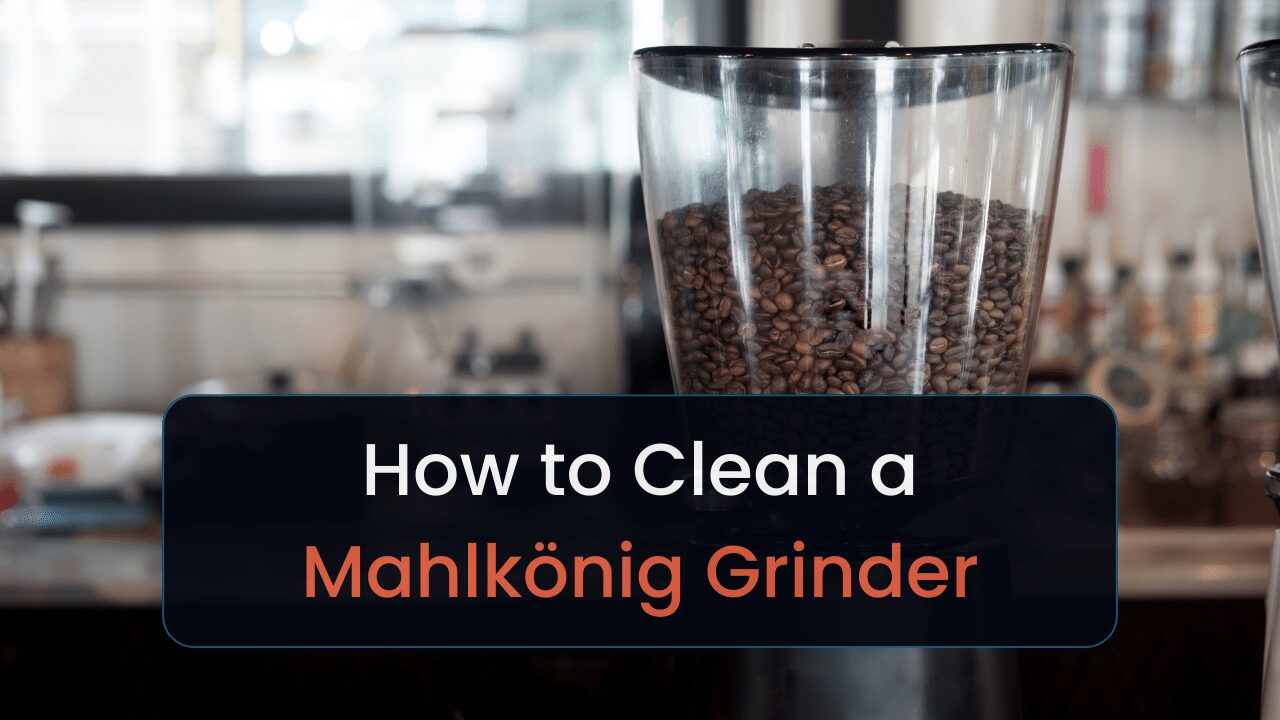This is a review of the best RV coffee makers. Read on to find a way to make high-quality coffee while on the road.
Having camped in motorhomes many times, I’ve found myself lacking ways to make (good) coffee. That inspired me to assemble all these great coffee makers.
I chose the Bialetti Moka Express because it’s capable of making more than a single cup of espresso-like coffee.
You may not like the type of coffee it produces. Don’t worry. I’ve provided a bunch of alternatives.
Let’s begin.
9 Best Motorhome Coffee Makers
- Bialetti Moka Express: Best Overall
- AeroPress Go: Most Portable
- Flair PRO 2: Best Low Wattage
- Bodum French Press: Best Non-electric
- 12V Immersion Heater + AeroPress: Best 12-volt Option
- UniTerra Nomad Espresso Machine: Best for Camper Vans
- Melitta Pour-Over Coffee Brewer: Most Compact
- OXO Pour-over: Best Under $100/Budget Pick
- Chemex: Best Coffee Maker Canada
9 Best RV Coffee Machines Compared
How did I define a coffee machine for an RV? I ensured most of these appliances could fit under your RV’s cabinet for easy storage. You probably don’t want to try to brew coffee while driving.
I also ensured each item reviewed meets a criterion. I’ll emphasize more toward the end of the post on what to consider when shopping for these types of coffee makers.
To clear up any confusion, here’s a legend:
- Dimensions:
- D: depth
- W: width
- H: height
Let’s get to it.
1. Bialetti Moka Express: Best Overall
![9 Best RV Coffee Makers in [currentyear] 1 bialetti moka](https://timscoffee.com/wp-content/uploads/2023/05/bialetti-moka-express.png)
| Price * | $ |
| Dimensions | 3.94 × 5.51 × 6.69 in (D, W, H) |
| Coffee Maker Type | Stovetop |
| Power Required? | Technically no |
| Brewing Time | 3–4 min. |
| Water Capacity | 160 ml = 2 cups |
| Warranty | 2 years |
Pros
- Produces robust & rich coffee
- Easy to use
- Durable & long-lasting
Cons
- Can produce bitter coffee
- Requires careful cleaning
- Not suitable for all stovetops
The Bialetti Moka Express’ compact and durable design makes it perfect for individuals who want to enjoy concentrated coffee while camping or traveling. Without having a bulky manual espresso machine.
It’s a top pick for RV users due to its compatibility with a variety of heat sources and its minimal power requirements.
It’s a stovetop coffee maker, which uses heat from an external source to build up steam within its chambers. The steam then extracts flavors from the coffee beans inside, resulting in a concentrated, balanced espresso-like drink.
So long as you constantly monitor it. Otherwise, you’ll end up with an over extracted (bitter) drink.
As for its cost:
The Bialetti Moka Express is a worthwhile investment. Its high-quality, durable aluminum construction ensures longevity. And the availability of replacement parts from the manufacturer ensures that this coffee maker can serve you for many years to come.
It’s easy to clean since all the components are removable. However, use mild soap when doing so. As the metal components are sensitive to soaps with harsh chemicals. I recommend using only water to avoid potential complications.
And due to its aluminum body, you can’t use it on induction ovens. Since induction ovens only heat magnetic materials like steel and cast iron.
Perhaps, you don’t want any electricity. Here’s an alternative.
2. AeroPress Go: Most Portable RV Coffee Maker
![9 Best RV Coffee Makers in [currentyear] 2 aeropress go portable coffee press kit](https://timscoffee.com/wp-content/uploads/2023/05/aeropress-go-portable-coffee-press-kit.png)
| Price * | $ |
| Dimensions | 5.3 × 3.9 × 3.9 in (D, W, H) |
| Coffee Maker Type | AeroPress |
| Power Required? | No |
| Brewing Time | 2 min. |
| Water Capacity | 8 fl oz = 1 cup |
| Warranty | 1 year |
Pros
- Very lightweight and portable, making it ideal for travel.
- It is easy to produce tasty, strong coffee with this device.
- Well-built, ensuring quality and durability.
Cons
- Smaller capacity than the original AeroPress.
- The device won’t fit wider cups.
The AeroPress Go is an ideal companion for solo travelers and campers. Its compact design and ability to produce strong, flavorful coffee make it the perfect coffee maker for camping. As it fits in most bags and requires minimal cleanup.
The AeroPress Go works the same as an AeroPress. Add medium-ground beans to the container. Wait for the coffee to extract, then plunge everything in the chamber into your cup.
Its durable construction, ease of use, and the quality of coffee it produces make it a worthwhile investment.
Unlike the AeroPress, it’s a third of the size. Making it a much better choice for traveling due to its compact nature. And it’s an ideal candidate to store under cabinets. The biggest downside is you’ll need a coffee grinder and paper filters.
Instead of a grinder, you could opt for pre-ground coffee. Though, it won’t taste as fresh.
The small size makes it brews less, though. Not ideal for serving multiple cups of coffee. And if you have a wide-brimmed coffee mug, the device won’t fit due to its small size.
Once it’s time to clean, no worries. Disassemble your AeroPress mini, wash each component, and let it dry. Nothing’s hard to clean.
Not enough flavor? The next pick will give you a more authentic espresso-style drink.
3. Flair PRO 2: Best Low Wattage Coffee Maker for RV
![9 Best RV Coffee Makers in [currentyear] 3 flair espresso maker pro 2](https://timscoffee.com/wp-content/uploads/2023/06/flair-espresso-maker-pro-2.png)
| Price * | $$$ |
| Dimensions | 12 × 6 × 10 in (D, W, H) |
| Coffee Maker Type | Manual espresso maker |
| Power Required? | No |
| Brewing Time | 3–5 min. (doesn’t include setup) |
| Water Capacity | 56 ml = 1 solo shot |
| Warranty | 5 years |
Pros
- High level of control over the brewing process.
- It includes a pressure gauge.
- Portable & comes with a carrying case.
Cons
- Requires manual effort & time to pull a shot.
- Can’t make milk-based espresso drinks like lattes or cappuccinos.
The Flair PRO 2 is ideal for espresso enthusiasts who want precision and control over their drink. Furthermore, its portability and compact design make it an excellent espresso maker for motorhomes.
It’s a manual espresso maker; you’ll need a fair amount of counter space and patience. They don’t automate any espresso-making steps like their semi- and fully-automatic counterparts, requiring a learning curve.
The machine’s build quality is exceptional, and it’s designed to last, providing value over time. Though, the Flair PRO 2 requires a learning curve and additional.
It includes a pressure gauge to help you understand how much pressure you’re applying to shots. Fantastic for knowing what’s happening when brewing. But not remarkable for latte or cappuccino lovers.
You’ll need a separate milk frother for those drinks, which could cost you upward of $100. And demand more space in your motorhome. Then add a water kettle and coffee grinder (or pre-ground beans) needed to use this machine.
But it’s much easier to clean than any electric espresso machine. All the parts are removable.
The machine uses 6–9 bars of pressure. 9 bars are the ideal number of bars for a balanced taste. 6–8 bars are great for adding a bit of a sour taste to your coffee without under-extracting it. Meaning it would be too sour.
Lastly, it includes a carrying case. Partially one of the reasons coffee expert James Hoffmann also recommends it as a great portable espresso maker [1].
Here’s a machine that won’t take as much space.
4. Bodum Travel French Press: Best Non-electric Coffee Maker for RV
![9 Best RV Coffee Makers in [currentyear] 4 bodum travel french press](https://timscoffee.com/wp-content/uploads/2023/06/bodum-travel-french-press.png)
| Price * | $ |
| Dimensions | 3.1 × 3.1 × 8.66 in (D, W, H) |
| Coffee Maker Type | French press |
| Power Required? | No |
| Brewing Time | 4 min. |
| Water Capacity | 15 fl oz = 1.5 cups |
| Warranty | 1 year |
Pros
- Brews coffee quickly.
- Double-walled design keeps coffee hot for longer.
- Compact
Cons
- Some users report difficulty in cleaning.
- Plastic parts aren’t that durable.
- Kid design can be a bit cumbersome.
The Bodum Travel French Press is ideal for coffee enthusiasts who want coffee that’ll stay hot for hours.
It’s a French press coffee maker that immerses your coffee beans to extract flavors. You’ll end up with a drink that’s not too strong, but could have bits of coffee grounds in it. At least that’s my experience.
Here’s why it’s worth the buy:
- Made of durable stainless steel, ensuring longevity.
- Designed to keep coffee hot for extended periods.
- Functions as a French press & travel mug offers convenience & saves space, especially valuable in an RV setting.
The double-walled design will keep your drink hotter for longer. And won’t shatter like the glass bodies of other French presses usually do. However, don’t play too rough with this model. The plastic lid may not resist impacts as well as the rest of its metal body.
Since you can remove everything, it’s simple to clean.
Or you may want something you could plug into a cigarette lighter port. Consider the next pick.
5. 12V Immersion Heater + AeroPress: Best 12 Volt Coffee Maker for RV
![9 Best RV Coffee Makers in [currentyear] 5 aeropress](https://timscoffee.com/wp-content/uploads/2023/05/aeropress.png)
| Price (AeroPress) * | $$ |
| Dimensions | 4.75 × 4.5 × 11.75 in (D, W, H) |
| Coffee Maker Type | AeroPress |
| Power Required? | No |
| Brewing Time | 2 min |
| Water Capacity | 10 fl oz = 1 cup |
| Warranty (AeroPress) | 1 year |
Pros
- Offers a quick, easy way to make a delicious cup of coffee.
- Extremely portable and perfect for travel or camping.
- Very easy to clean, requiring only a quick rinse.
Cons
- Coffee tends to cool down quickly due to poor heat retention.
- Can be easily knocked over due to its tall and narrow design.
- Primarily designed for making one cup at a time.
The AeroPress is the ideal 12-volt coffee maker for RVs when paired with a 12v immersion heater, due to its compact size and ability to brew quickly.
AeroPress coffee makers require you to plunge hot water and coffee beans through a paper filter, resulting in a recurring paper premium on top of buying coffee beans. It’s a great way to get control whether you want strong or mild coffee with a portable device.
Its affordability, combined with its durability and versatility, makes it a worthwhile investment. The device’s simple design allows for a variety of brewing methods. Enabling you to tailor your coffee to your taste.
I can’t recommend any specific 12V immersion heaters, but that’s what you’d want to use if you’re limited to using your cigarette lighters to heat water. Then mix the heated water with your AeroPress and serve.
The AeroPress is a bit large. Thus, you may want to resort to the AeroPress Go. See my recommendation earlier to learn more.
You’ll also need a flat, stable surface to do your AeroPressing on. Because it’s easy to knock down due to its tower-like design. These types of coffee makers are known for only producing a cup of coffee at a time. Not ideal for serving groups.
But once you’re done using it, it’s simple to clean. Disassemble it and clean with water. Use mild soap or vinegar (type doesn’t matter) to clean the chamber’s insides if it gets sticky.
On to a more “robust” espresso maker.
6. UniTerra Nomad Espresso Machine: Best Coffee Maker for Camper Van
![9 Best RV Coffee Makers in [currentyear] 6 uniterra nomad](https://timscoffee.com/wp-content/uploads/2023/06/uniterra-nomad.png)
| Price * | $$$ |
| Dimensions | 6.6 × 6.6 × 5.9 in (D, W, H) |
| Coffee Maker Type | Manual espresso maker |
| Power Required? | No |
| Brewing Time | NA |
| Water Capacity | 10 fl oz = 1 cup |
| Warranty | 1 year |
Pros
- Lightweight
- It doesn’t require electricity.
Cons
- Requires a bit of physical effort to operate.
- Small water reservoir.
- Not be suitable for large gatherings.
The UniTerra Nomad is perfect for mobile coffee lovers, especially camper van owners. Its compact, non-electric design ensures quality espresso anywhere.
It’s a manual espresso maker that produces concentrated coffee shots by manually applying pressure to the machine. Then, it’ll spray hot water through your coffee beans. Unlike other espresso machines, this one doesn’t automate anything for you.
Its unique features like the True Crema Valve and ability to make coffee-shop-grade espresso without electricity make it a valuable purchase for frequent travelers or motorhome dwellers.
The former feature will result in your drink having more crema, part of what makes espresso what it is.
Most manual espresso makers use a lever to apply pressure. This one doesn’t. It uses a weird see-saw mechanism where you use your thumbs to gradually apply pressure. It’s a bit annoying to use.
And will require a bit of practice and manual effort to get it to work.
Another annoyance comes from cleaning the water reservoir. It has a small opening, which makes it difficult to thoroughly clean. But it’s simply to remove all the other parts.
Since the Nomad will make single shots at a time, you must frequently refill your water reservoir. And it’s not ideal for making drinks for more than 1 person. Unless folks in your party don’t mind waiting 10 or more minutes for setup and brewing.
Let’s simplify things.
7. Melitta Pour-Over Coffee Brewer: Best Small Coffee Maker for RV
![9 Best RV Coffee Makers in [currentyear] 7 melitta pour over coffee brewer w glass carafe](https://timscoffee.com/wp-content/uploads/2023/06/melitta-pour-over-coffee-brewer-w-glass-carafe.png)
| Price * | $ |
| Dimensions | 5.81 × 7 × 7.94 in (D, W, H) |
| Coffee Maker Type | Pour-over |
| Power Required? | No |
| Brewing Time | 4–6 min |
| Water Capacity | 38 fl oz = 6 cups of 6-fl oz coffee |
| Warranty | 3 years |
Pros
- Glass carafe that holds enough coffee for up to 6 cups.
- Produces a smooth and rich cup of coffee.
Cons
- The filtering process can take a bit of time.
- Requires the use of size-4 cone-shaped paper filters.
The Melitta Pour-Over Coffee Brewer is the best small coffee maker for RVs due to its compact design, ease of use, and the ability to brew directly into a cup or travel mug.
Think of a pour-over coffee maker like a manual drip maker. You plop a filter into the cone-shaped design, add your beans, then pour boiling water over the beans. From there, flavors trickle into your cup or carafe.
It’s reasonably priced and offers a high-quality brewing experience. The brewer’s design allows for optimal coffee extraction, resulting in a smooth and rich cup of coffee.
You don’t have to use the glass carafe to get your drinks. I recommend bringing your own thermal carafe to keep drinks hotter for longer. And to prevent an accident from happening to the glass.
It’s not fun cleaning broken glass while camping in a motorhome.
You’ll make a decent amount of coffee with the included carafe if you’re crazy and stick with the glass one. Enough to serve many folks while you’re camping.
However, you’ll need to continually pay for paper cone filters. Unless you spend over $20 for a reusable filter, which may make cleaning a bit more difficult. Since you’ll need to pick out coffee grinds from the stainless steel mesh.
Aside from add-on metal filters, the Melitta is simple to clean. As it doesn’t require disassembling.
Here’s an alternative pour-over device.
8. OXO Pour-over: Best RV Coffee Maker Under $100
![9 Best RV Coffee Makers in [currentyear] 8 oxo pour over](https://timscoffee.com/wp-content/uploads/2023/06/oxo-pour-over.png)
| Price * | $ |
| Dimensions | 5.25 × 5.25 × 5.25 in (D, W, H) |
| Coffee Maker Type | Pour-over |
| Power Required? | No |
| Brewing Time | 5–15 min |
| Water Capacity | 12 fl oz = 2 6-fl oz cups |
| Warranty | 2 years |
Pros
- Offers precise control over the brewing process.
- Comes with a water tank that ensures even distribution of water.
- The design allows for easy cleaning.
Cons
- The plastic material may not be as durable as other options.
- Requires more time & attention compared to automatic coffee makers.
- The taste of the coffee can vary depending on the user’s skill.
The OXO Pour-Over Brewer is ideal for coffee enthusiasts who value control in their brewing process. It’s the best small coffee maker under $100 due to its compact size and no need for electricity.
Another pour-over coffee maker. Gravity uses hot water poured over coffee grounds and turns it into a clean-tasting drink.
This brewer also offers the flexibility to adjust the brewing process to your taste, making it a versatile choice for different coffee preferences. Its durable construction ensures longevity, making it a cost-effective choice in the long run.
Instead of just using a paper filter, the OXO also uses a water tank that you place over the cone-shaped section. It’ll help control water flow for more even flavor extraction.
Despite the additional component, like most pour-over makers, it’s simple to clean. Since it doesn’t have many components.
And another pour-over alternative.
9. Chemex: Best RV Coffee Maker, Canada
![9 Best RV Coffee Makers in [currentyear] 9](https://timscoffee.com/wp-content/uploads/2023/06/chemex.png)
| Price * | $$ |
| Dimensions | 24 × 16.25 × 3.3 cm (D, W, H) |
| Coffee Maker Type | Pour-over |
| Power Required? | No |
| Brewing Time | 3.5-4.5 min. |
| Water Capacity | 887 ml = 6 147-ml cups |
| Warranty | 1 year |
Pros
- Produces clean, rich coffee.
- Offers timeless, classic design.
- Available in various sizes, accommodating different needs.
Cons
- The borosilicate glass can shatter.
- Does not keep coffee hot for extended periods.
- Proprietary filters can be hard to find.
The Chemex is a top choice for coffee enthusiasts who appreciate a balance of aesthetics and performance. It’s great for folks in Canada and the UK due to Chemex’s international warranty policy. And the fact you won’t have to worry about electrical outlet compatibility.
Since it’s a pour-over coffee maker, you won’t need electricity. You fill a filter with beans, pour water over it, and watch as it drips into the carafe. Giving you “drip” coffee that tastes better than what a drip coffee maker produces.
Its unique double-bonded paper filters contribute to a deep, rich coffee flavor. And its borosilicate glass construction is designed to resist thermal shock. While it may require some practice to master, the Chemex offers a high degree of brew control.
Allowing you to tailor each brew to your specific tastes.
The Chemex has a gooseneck design, which makes it a bit more difficult to clean. Since the carafe and pour-over cones connect. However, there’s no meta, which means no worrying about soap choices.
I’d only use a Chemex while RV camping if you have somewhere safe to store it. It’s made of glass and could break easily. But the resulting coffee it produces makes it worth the risk.
So long as you don’t want hot coffee later on. It won’t hold heat as long as stainless steel or aluminum carafes. And it’s a bit of a pain to find the filters needed for the Chemex.
Again, consider investing in a reusable Chemex filter from a third party.
Keep reading to learn whether you’re buying the right coffee maker for motorhomes.
Buying Guide for RV Coffee Makers
Consider these factors when shopping for coffee makers for RVs:
| Criteria | Why it’s Important |
| Size & Weight | Space and mobility needs |
| Power Source | RV compatibility |
| Brewing Time | Convenience |
| Brew Quality | Taste expectations |
| Capacity | Serving size flexibility |
| Ease of Cleaning | Maintenance effort |
| Price | Budget considerations |
The following sections will dive further into these points. Use my criteria as a starting point to build your own. To ensure you’re not making a regrettable purchase.
1. Size & Weight
You’ll need to consider how much room you have available for storage and operation. Plus, a heavy coffee maker can weigh down your RV. Something you don’t want if you’re struggling to meet your RV’s weight limit [2].
Different types of coffee makers have varying space and weight requirements. AeroPress, for example, is light and compact. A perfect fit for minimal storage and counter space.
Manual espresso makers are usually larger and heavier. They also demand more counter space due to their design and operation process.
Measure your motorhome’s space and determine what coffee maker will fit.
2. Power Source
Some electric coffee makers and grinders require more electricity than your RV can provide, which may trip the circuit breaker.
A high-end espresso machine could require up to 15,000 watts to operate. In an RV, where power sources may only supply 12,000 watts in total [3]. Running such a machine along with other appliances could overload your system.
The load RVs can handle will vary by model. Refer to your manual before buying an electric coffee maker.
By choosing manual devices like manual espresso makers, AeroPress, or cold brew makers, you eliminate the need for a power source.
3. Brewing Time
Brewing time impacts how quickly you can enjoy your coffee and how much energy you use.
Here are some examples:
- Instant coffee: Provides the quickest brewing time, ready in just 1–2 minutes.
- An excellent choice if you’re in a hurry or conserving energy.
- Stovetop espresso makers: Take around 5–10 minutes.
- They need time for the water to heat up & for the pressure to build, which forces the water through the coffee grounds.
- AeroPress: Requires about 2 minutes of brewing time.
- Followed by 20–30 seconds for pressing.
Consider how long you’re willing to wait for your coffee and how much energy you’re prepared to use.
4. Brew Quality
Brewing quality matters when picking a coffee maker for RVs because it directly affects the flavor of your coffee.
These 3 factors can influence your brew’s quality:
- Brewing method: Determines how much control you have over your drink’s flavor.
- Coffee beans: Higher-quality beans result in more complex tastes.
- Grinder type: Good grinders lead to more consistent grinds & even flavor extraction.
Different brewing methods extract flavors differently.
A French press yields a rich, full-bodied coffee because it allows oils and fine coffee particles into your cup. An AeroPress or a drip coffee maker uses a paper filter, which catches most oils and particles.
Delivering a cleaner, less oily cup.
Freshly roasted, high-quality beans can make a world of difference in taste compared to pre-ground or instant coffee. Look for beans that have been roasted within the past couple weeks for the best flavor.
However:
It’s difficult to have freshly roasted beans while camping. Your best bet is to store beans in your rig’s freezer to help preserve freshness.
Grinder type matters because a consistent grind size leads to even extraction and better flavor.
Burr grinders, whether manual or electric, grind beans to a uniform size. Giving you more control over your brew’s taste.
Blade grinders chop beans unevenly, often leading to inconsistent flavors.
5. Capacity
A larger reservoir allows for multiple brews without needing frequent refills. Handy if you’re making coffee for several people. However, they take up more space and may not suit compact RV kitchens.
A smaller reservoir is space-efficient—perfect for solo coffee drinkers—but requires regular refilling.
6. Ease of Cleaning
Ease of cleaning is crucial for coffee makers in RVs because you don’t want to spend precious travel time on complicated cleaning processes.
A coffee maker with fewer parts or detachable components is easier to clean. Some machines also have self-cleaning functions, saving you effort. But these often cost over $1,000.
RV kitchens have limited space, and cleaning can prove challenging. When selecting a coffee maker, consider how quickly and easily you can maintain it to ensure it.
7. Price
You’ll want a balance between cost and quality.
High-end machines for RVs offer excellent brew quality, but can be expensive and complex to operate. Affordable models may have less brew quality or fewer features, but are usually easier to use and maintain.
Consider your budget, the frequency of use, and your taste preference.
Types of Coffee Makers for Motorhomes
Here are all the different types of coffee makers that work well for RV owners:
| Type of Coffee Maker | Average Maker Price * | Price Per Cup † | Coffee Acidity ‡ | Best For |
| AeroPress | $31.95–$49.95 | $0.20–$0.40 | Medium-high | Portability |
| Clever Dripper | $25–$61.99 | $0.20–$0.40 | Low-medium | Balance & simplicity |
| Stovetop | $18.99–$99.95 | $0.10–$0.20 | High | Simplicity |
| Phin | $17.99–$30 | $0.10–$0.20 | Medium-high | Camping |
| Cold brew | $27–$65 | $0.40–$0.60 | Low | Smoothness & low acidity |
| Pour-over | $14–$50 | $0.30–$0.50 | Low-medium | Control |
| Nel drip | $7–$28.25 | $0.30–$0.50 | Low-medium | Low-cost |
| Espresso maker | $100–$6,000 | $0.50–$1.00 | High | Intensity & crema |
| Walküre | $19.64–$128 | $0.40–$0.60 | Medium-high | Innovation & design |
| French Press | $16.99–$32.99 | $0.20–$0.40 | High | Beginners |
† These prices are only estimates based on the cost of coffee beans, filters, water and electricity, and they may vary depending on your location, preferences and equipment.
‡ Acidity levels are only estimates based on the pH scale and the brewing methods, and they may vary depending on your location, preferences and equipment.
Here are coffee makers that are the most portable:
- Phin: Produces STRONG coffee.
- French press: Often fragile, yet has great-tasting coffee.
- Nel drip: Sometimes difficult to find
- Clever dripper: An acquired taste.
- Coffee bags & instant coffee: Not mentioned in the list, but a great, cheap way to get a caffeine fix.
I don’t recommend Walküres. They’re expensive and fragile. Depending on the device, pour-over, and cold brew makers also aren’t durable.
So long as the stovetop coffee makers aren’t made of aluminum, they’ll work on any stovetop. Otherwise, don’t attempt to use aluminum on induction ovens. The hob’s requirements for magnetic metals won’t boil anything inside aluminum.
Most espresso makers are bulky and require a fair amount of electricity. I recommend sticking to manual espresso makers for camping in motorhomes. An AeroPress and stovetop maker could also produce concentrated coffee for a similar taste.
FAQs for RV Coffee Makers
Here are some frequently asked questions regarding coffee makers for RVs.
What Is the Best Way to Make Coffee in an RV?
The best way to make coffee in an RV is by using a compact coffee maker such as a French press, an AeroPress, or a single-serve pod machine.
The choice depends on your preference for taste and convenience.
Can You Run a Keurig in an RV?
Yes, you can run a Keurig in an RV, provided you have an electrical system or generator capable of providing sufficient power for the machine.
Our Verdict
Let’s summarize the top picks:
- Bialetti Moka Express: Produces great-tasting concentrated coffee without needing an espresso machine.
- AeroPress Go: Easy to use & convenient to store.
- Flair PRO 2: Produces stellar espresso & will last forever.
I chose the Bialetti Moka Express as the best motorhome coffee maker due to its superb durability and exceptional taste. Though, it doesn’t have a milk frother.
Footnotes:
* Price will vary by model, manufacturer, and vendor.

